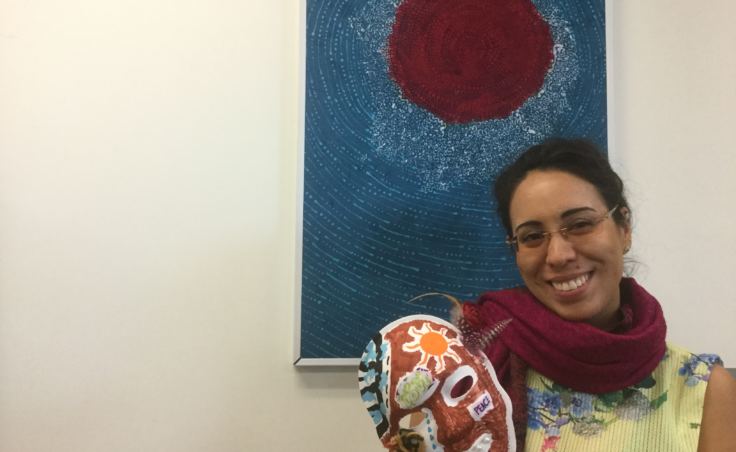On a recent afternoon, seven people are using colorful paints, feathers, strings and beads to decorate masks inside Access Alaska, a support center for people with disabilities.
Retired Air Force Sgt. John Main is busy sketching designs. He’s methodical, coordinating colors with a list of emotions written on a separate sheet of paper.
Like everyone else at this event, Main suffers from a brain injury. In 2011 he had a stroke, but it was not diagnosed for five years.
“I didn’t have slurred speech,” Main said. “I didn’t have weakness anywhere, so they didn’t think I really had a stroke. Well, what they didn’t realize — I’d had a stroke, but it affected something different than my muscles. It affected my cognitive reasoning, my analytical abilities.”
When it comes to brain injuries, appearances can be deceiving.
Robert Barnett, a brain injury survivor who works at Access Alaska, said there’s a disconnect between the internal experience of a cognitive disability and what it looks like to an outside observer.
“It takes me a while to even understand people’s disabilities because they’re invisible,” Barnett said.
Many survivors feel like they have to put on a disguise to face the world, and that’s exactly what the Unmasking Brain Injury project hopes to address.
The idea came from Hinds’ Feet Farm, a nonprofit based in North Carolina.
More and more people started getting involved as the masks were displayed around the country.
Annette Alfonsi of Anchorage first heard about the project from a friend in another state.
Having suffered a brain injury herself, she requested materials to make her own mask and eventually became a coordinator for the project in Alaska.
She hopes that the masks, although unique to each maker, will bring them together.
“Folks, especially across Alaska, can feel very alone if they don’t know folks in their immediate area that have that kind of brain injury,” Alfonsi said. “This is a really great way to raise awareness.”
Two studies from 1999 and 2008 estimate that there are between 3 million and 5 million brain injury survivors now living with a disability in the United States.
However, these figures are limited to administrative data from hospitalizations and emergency room visits, which doesn’t give a complete picture of the problem.
A lack of awareness can make it difficult for people to find care.
While there are a few resources in Alaska, Alfonsi said it was difficult to figure out what options were available for her.
“If you’re navigating that system by yourself, you don’t have any experience with it,” she said. “Then you don’t have the ability to be proactive about it because your symptoms kind of lead to being isolated and feeling alone or quiet and in the dark.”
When John Main finishes the design for his mask, he has divided it into sections that represent different stages of his life.
The left side of the mask is a pale pink that represents life before his brain injury.
The middle section of the mask is darkly shaded and chaotic, illustrating the uncertainty of the years when his stroke had not been diagnosed.
“Before I’d seen hopelessness,” Main said. “I did not know what was going on, I just knew that I was failing in jobs that I shouldn’t have failed in.”
On the right side of the mask, however, Main colors pink for the support he has received since his stroke was diagnosed and green for the bright future he sees ahead of him.


